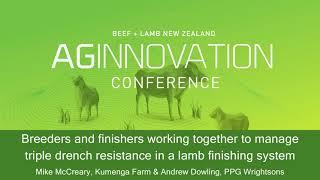Search results
Displaying 301 - 310 results of 1122
- Factsheet… carbon stocks net carbon position new zealand sheep beef farmland key findings research … amount carbonsequestering woody vegetation sheep beef land covering approximately 2 … sequestration occurring farms independent study headed bradley case senior lecturer gis …
- Factsheet… beef lamb 0800 233 352 farmers farmers case study leo jane littlewood have been farming … equipment required factsheets made possible sheep beef farmer investment industry lnz …
- News… limits through the ETS, is positive for sheep and beef farmers. The Government has … could come from the integration of trees on sheep and beef farms, rather than through … ramping up of native forest planting. Sheep and beef farmers want to do their part …

- Resource book… moving out business often harder than moving sheep beef industry has traditional approach … clarified leading breakdown relationships poor use professionals resulting lack … zealand red meat profit partnership 22 case study miller family typical farming family who …
- Factsheet… manager performance particular areas has been poor wanting staff focus areas farm owner … beef lamb 0800 233 352 farmers farmers case study kevin lucy smith employ 3 staff 1 farm … counter negativity factsheets made possible sheep beef farmer investment industry lnz …
- News… with no organic matter or nitrogen and poor soil structure, cultivation is … the following spring or autumn due to poor soil structure. If cultivating deep silt, …

- Video… farm triple drench resistance case study …
- Editable PDF… wairoa district 2 client report case study socioeconomic impacts largescale … however growing concern from new zealand sheep beef farmers arising from recent trend … planting have rural communities particularly sheep beef farming communities purpose report …
- … Elevate your future in sheep and beef! Applications are now open for … make a significant impact on the New Zealand sheep and beef sector? Beef + Lamb New Zealand … completed one year of agricultural based study. What the scholarship offers you …
- NewsThe B+LNZ team talked with farmers at 2024 Mystery Creek Fieldays about our on-farm extension work, research, and efforts to boost sector …

